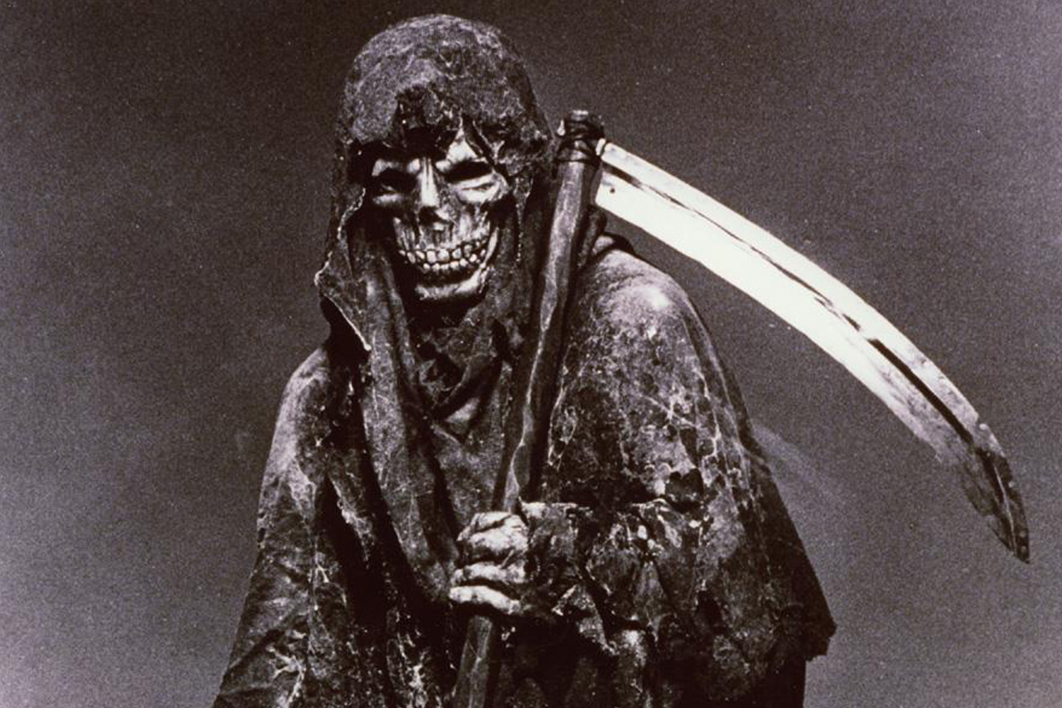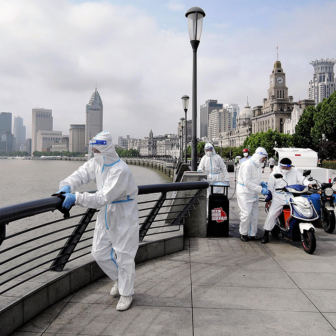Sydney’s Delta outbreak has sparked calls for a reprise of the Grim Reaper campaign that haunted our screens (and dreams) for six weeks in 1987. This week the Commonwealth delivered, but rather than echoing the Reaper’s melodrama it took its cues from Quit Victoria’s hard-hitting anti-smoking ads.
The commercial shows a panicked young woman gasping painfully for air in a hospital bed, decked with high-flow oxygen tubes. I found it hard to watch, and immediately messaged a friend, one of Sydney’s earliest cases of Covid-19, to warn her to avoid watching it.
So what’s the evidence about the effectiveness of such campaigns?
Experimental studies show that fear appeals can work, but systematic reviews indicate their effects are relatively modest. They find differences of between 10 and 30 per cent in self-reported attitudes, intentions and behaviours. But these are “laboratory” studies that measure short-term impacts. Evaluations of real-world campaigns have found smaller effects, and research by the University of Kentucky’s Seth Noar and colleagues found that’s true of health promotion campaigns across the board. Even the best-designed interventions average 9 per cent behavioural change per year.
So these campaigns work, but their potential benefits are small and may not outweigh their potential side effects and ethical concerns. As a public health practitioner and researcher my concern is more practical: what exactly did we want this campaign to do?
Social-marketing principles focus on defining our strategic objectives and identifying the precise behaviour we want audience members to adopt. On the latter criterion, the government’s ad is a mess, specifying three behaviours: “Stay home. Get tested. Book your vaccination.”
Complying with lockdown is not as simple as it seems. Here in Sydney, we hang on the daily 11am presser, listening for changes in restrictions and thinking about how to apply them in our daily lives. This detailed cognitive process isn’t helped along by fear or panic.
For many who don’t stay home, the issue is not complacency. It’s needing to work or care for family members — and, often, it’s not hearing the daily presser translated in their own language. Extraordinary rates of testing also make clear that we don’t lack motivation to care for the community: rather, what we lack is timely access to vaccination. The behavioural message there is “hurry up and wait.”
These failings aside, let’s consider the strategic objective of releasing a fear campaign at this point in the Australian epidemic.
Above all, it is designed to solve a political problem of our governments’ own making. Australia has used border control, both internal and international, as the centrepiece in a political theatre of epidemic control. This approach has encouraged the notion that we could just wait out the global pandemic until all Australians have been given their vaccine of choice.
Meanwhile, a vocal Covid commentariat has preached the gospel of Zero Covid — that nothing short of zero daily cases is acceptable. This argument fed a popular campaign against the AstraZeneca vaccine based on the claim that only Pfizer could offer herd immunity, that idyllic state in which Australians would never have to learn to live with the virus.
We are facing the epidemic consequences of that mistaken sense of invulnerability. Even ATAGI, the Australian Technical Advisory Group on Immunisation, bet on Australia managing to avoid further outbreaks, finding that the minuscule risk of blood clots was not outweighed by any protective benefit against illness or death from Covid-19.
As the daily presser reminds us, we now have individuals in their twenties and thirties battling the virus in intensive care. Imagine how different the outbreak would feel if we’d been vaccinating Australians at the projected rate of one million AstraZeneca doses per week.
This complacency runs deep in our epidemic response, and can’t be overcome with a single campaign, however hard-hitting it may be. Long-lasting change is necessary.
The historian Marianna Stylianou argues that we overestimate the effectiveness of the Grim Reaper campaign because it was just so memorable. Its success in this regard has cast other, more important responses to the AIDS crisis into the shade.
What people don’t remember is that the Hawke government convened a National Advisory Committee on AIDS that ran, in various forms, from 1984 to 2003. Known as NACAIDS, it was chaired by Ita Buttrose, a charismatic and effective communicator who was editor of the Daily Telegraph at the time of her appointment.
The commission ran a whole program of education and communication activities, not just mass media campaigns, that helped the Australian public understand that condoms — not fear — were the answer.
It is striking that our successful response to AIDS was not based on health advice alone. NACAIDS sat alongside a parallel committee of clinicians and scientists. Historian Paul Sendziuk interprets this as a pragmatic move that recognised the importance of considering practical perspectives drawn from everyday lived experience.
As the Covid-19 outbreak kicked off, the Morrison government appointed a bunch of its mates to coordinate business responses to the crisis. It is long past time to establish a National Covid-19 Commission with similar powers and functions as NACAIDS.
We need to stop looking for silver-screen bullets and ask what ongoing, well-funded program of activities can change how Australians understand the pandemic and our role in protecting ourselves and the community. •




